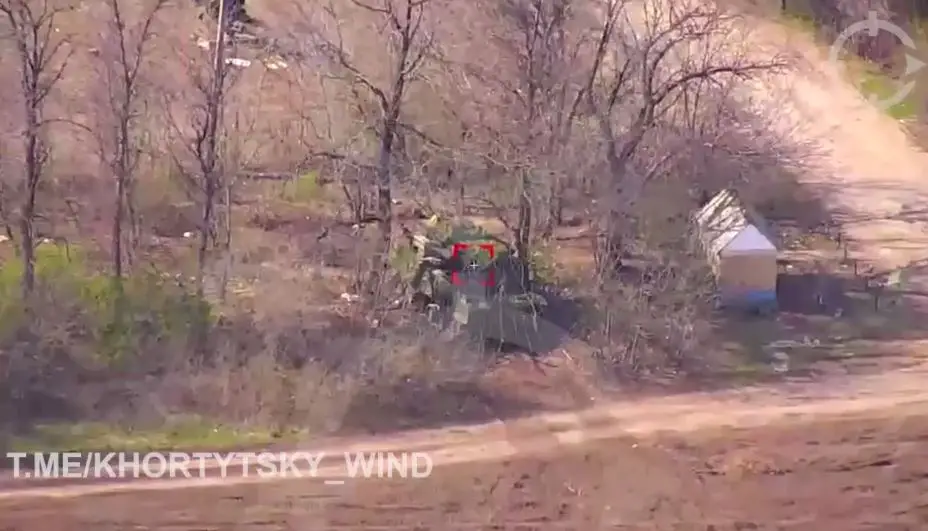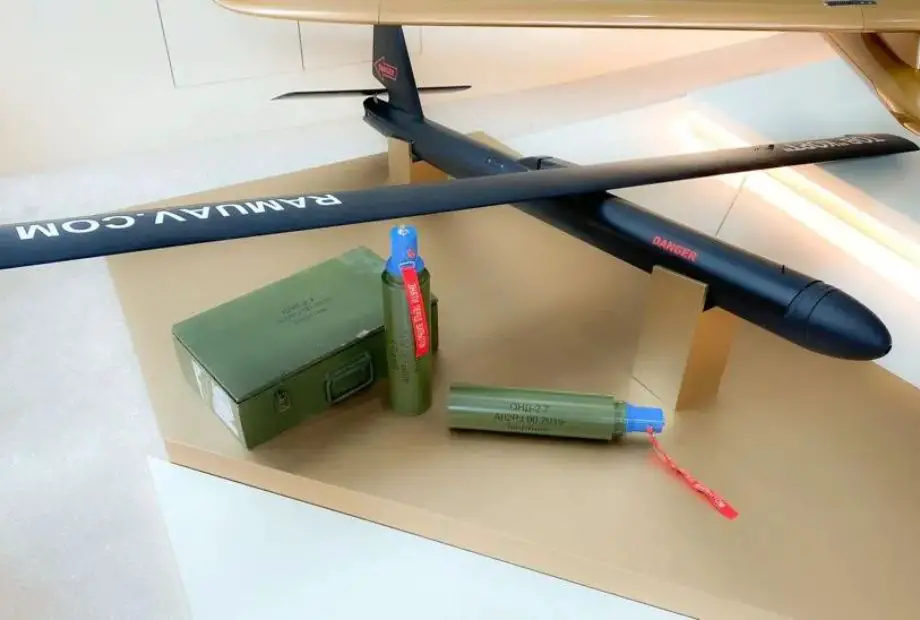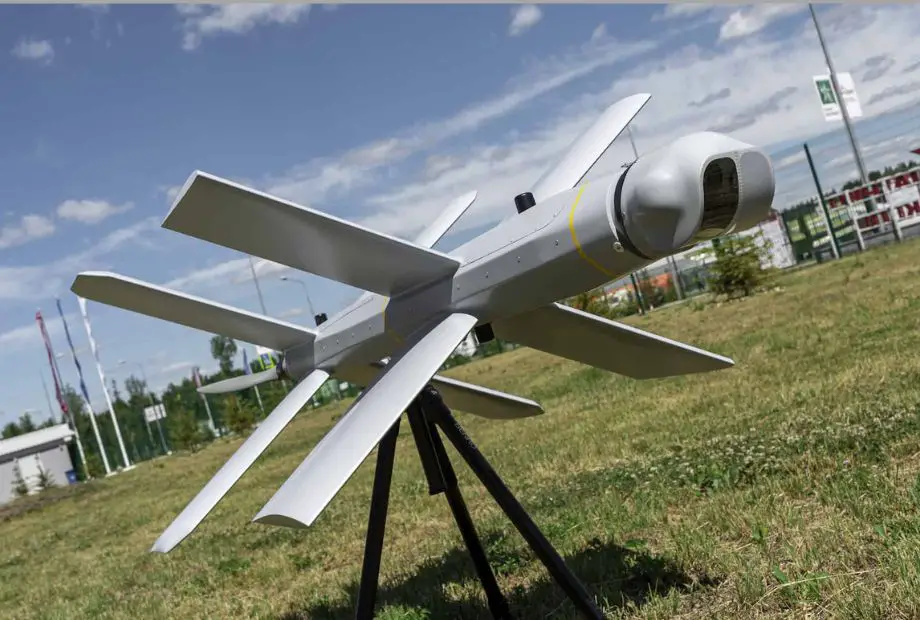- Army
- Conflicts in the world
- Israel - Iran conflict 2025
- Pakistan - India Conflict 2025
- Russia Ukraine War 2022
- Libya conflict day by day
- HAMAS - Israel War 2023
- Operation Serval in Mali French Army
- Sangaris operation Central African Republic
- Sangaris opération militaire République Centreafrique
- Ukraine - Russia conflict
- Syria conflict news
- Defence & Security Industry Technology
- Armies in the world
- Analysis Defense and Security Industry
- Conflicts in the world
- Navy
- Air
Ukraine uses new loitering ammunition RAM X to destroy Russian 2S6 Tunguska air defense vehicle
According to a recent video published on Telegram, the Ukrainian army has used a new locally-made loitering munition called RAM X, also dubbed 'Ukrolancets,' due to its similar design to the Russian Lancet kamikaze drone. In the video, the new RAM X strikes and destroys a Russian 2S6 Tunguska self-propelled anti-aircraft gun system.
Follow Army Recognition on Google News at this link

Capture of 2S6 Tunguska destruction (Picture source Telegram/Khortysky_Wind )
RAM X Attack Drones
The new drone was first mentioned in a Telegram post on the official channel of the Khortytsia operational-strategic group fighting in Ukraine’s Eastern front on Tuesday, April 9th, 2024, in a video with the following description: “As a result of aerial reconnaissance in the area of the settlement of Zorya, the enemy's 2S6 Tunguska air defense system was detected. A RAM X loitering munition was launched at the detected target. As a result of fire damage, the detected target was critically damaged.” ( video capture below)
Several more strikes from the same type of munitions appear in a new compilation video from the Ukrainian SBU showing the destruction of various other air defense systems: Two Buk launcher vehicles, a Buk radar vehicle, two Tor systems, a Strela-10, and a Tunguska, pretty much a collect-the-set of Russian mobile surface-to-air systems, possibly to emphasize the point that nothing stops them. These are expensive assets that will be difficult or impossible to replace in wartime.
The 2S6 Tunguska is a highly advanced Soviet/Russian self-propelled anti-aircraft system, developed in the 1970s and entering service in the 1980s. It combines a radar-guided anti-aircraft gun system with surface-to-air missiles on a tracked vehicle platform, providing all-weather, day-and-night protection against a variety of aerial threats including aircraft, helicopters, and drones. The Tunguska is equipped with twin 30mm autocannons and eight 9M311 (SA-19 "Grison") missiles, enabling it to engage targets at a range of up to 10 kilometers for missiles and 4 kilometers for cannon fire. Its integrated radar and optical targeting systems allow for effective tracking and engagement of fast-moving targets, making the Tunguska a key component of Russian air defense forces and a significant asset on the modern battlefield.
Another point is the name of the drone. RAM X seems to imply an upgraded version of the RAM II loitering munition made by the Ukrainian company CDET. The company produces the highly successful Leleka-100 (“Stork-100”) fixed-wing reconnaissance drone, which has a seven-foot wingspan and an endurance of more than two hours, making it a prized asset for long-range, long-duration reconnaissance.
The RAM II was unveiled way back in 2018 when it was offered for export but attracted little interest. It has a range of 30 km/ 20 miles, carries a 3 kilo/ 6.5 lb. warhead, and can strike with pinpoint precision. It has not been seen in this conflict and it appears the design has been modified in the new version.

RAM II loitering munition -no picture of RAM X as been revealed (Picture source SBU )
Unlike the Lancet, which is easily identifiable in attack videos from its distinctive white silhouette with double-X wings, the RAM X is much harder to spot. From what is visible, it looks like a conventional aircraft layout with a single pair of wings like the Lelka-100.
Ukraine war: scene of massive use of remotes ammunition
Russia’s Lancet loitering munition, made by Kalashnikov subsidiary ZALA, has been one of the great success stories of the conflict. The 12 kilo/ 26-pound weapon has a range of more than 40 km/ 25 miles and has proved highly effective at knocking out tanks, artillery, and other targets. The main limitation has been that it has only been produced in small numbers, apparently due to a Ukrainian drone strike against the plant that produces vital components. In addition, there are questions over the effectiveness of its targeting software with many misses recorded.
This success has led many to ask where Ukraine’s equivalent was. Ukraine has fielded small numbers of imported U.S. Switchblades (and elusive Phoenix Ghosts) and Polish Warmate loitering munitions and a few indigenous designs, these have had little impact. Ukraine's FPVs are undoubtedly effective, but something bigger is needed.
In February 2024, Mykhailo Fedorov, Minister of Digital Transformation and drone supremo stated that two Ukrainian Lancet equivalents were in production and would be fielded soon. These include terminal guidance so can hit targets even if they are protected by jammers.
The RAM X is likely to be one of those products. Others under development include the Perun, which looks to be a direct, reverse-engineered copy of the Lancet (which itself owes a lot of design features to Israel’s Hero loitering munitions), and the Bayonet made by Terminal Autonomy.
Ukrainian Perun: a copy of Russian lancet
The Ukrainian Perun appears to be a direct copy of the Russian Lancet.
What all these weapons offer is a similar capability to the ubiquitous FPV kamikaze drone with a greatly extended range. And while the Lancet costs a reported $30,000, the Ukrolancets will be produced at a fraction of the cost and in far greater numbers. Even other Russian drone developers think Lancet is vastly overpriced, but the makers enjoy a comfortable relationship with Russia’s Ministry of Defence.
While FPVs typically hit at ranges of 10 km/ 6 miles or so and occasionally double that, Ukrolancets can reach 50 km / 30 miles or more depending on communications. This is a HIMARS-type range and means they can hit Russian targets like artillery and air defense systems which are normally kept well back out of FPV range. The motive for hitting air defense first is likely to be based on value, with one Tor system priced at around $24m. Whether Russia can replace such systems is an open question.

Perun loitering ammunition (Picture source Ukraine Military press service )
Long-range strikes require good intelligence. Ukraine appears to have plenty of target information from data passed by the U.S. and other allies who have a wealth of satellite and other intelligence-gathering systems, but the need for this data will be a major limiting factor for other forces using such weapons in future conflicts.
Previously as Ukraine has gained longer-range strike capability, the Russians have been forced to pull back their forces. HIMARS destroyed many Russian ammunition depots and headquarters before these were relocated out of range. FPVs mean that in some areas Russian tanks have reportedly been pulled back several miles from the front line to avoid destruction.
Can artillery and air defense still do their job if they have to be kept back far from the front line most of the time and only pushed forward when needed? Given how visible moving vehicles are, are they going to get hit every time they go into action? As Ukraine rolls out its Ukrolancets, we will get the answers as a giant new game of Russian Roulette unfolds that's one of the reason of the future deployment of 2S38 Derivatsya on the frontline.


























